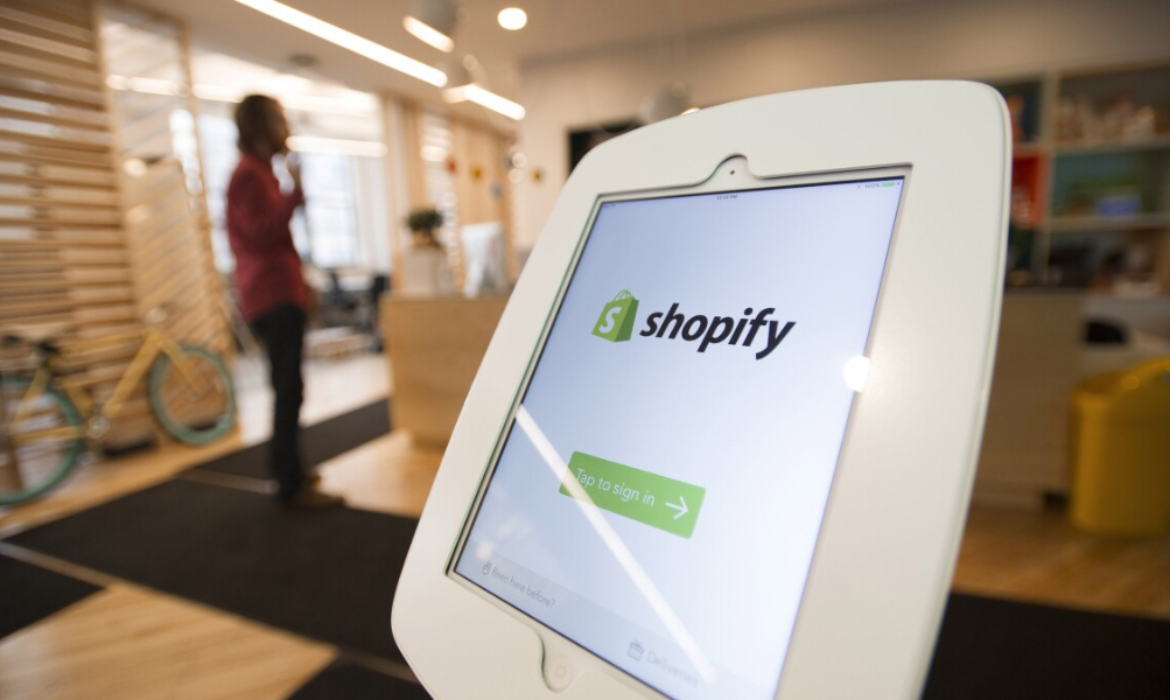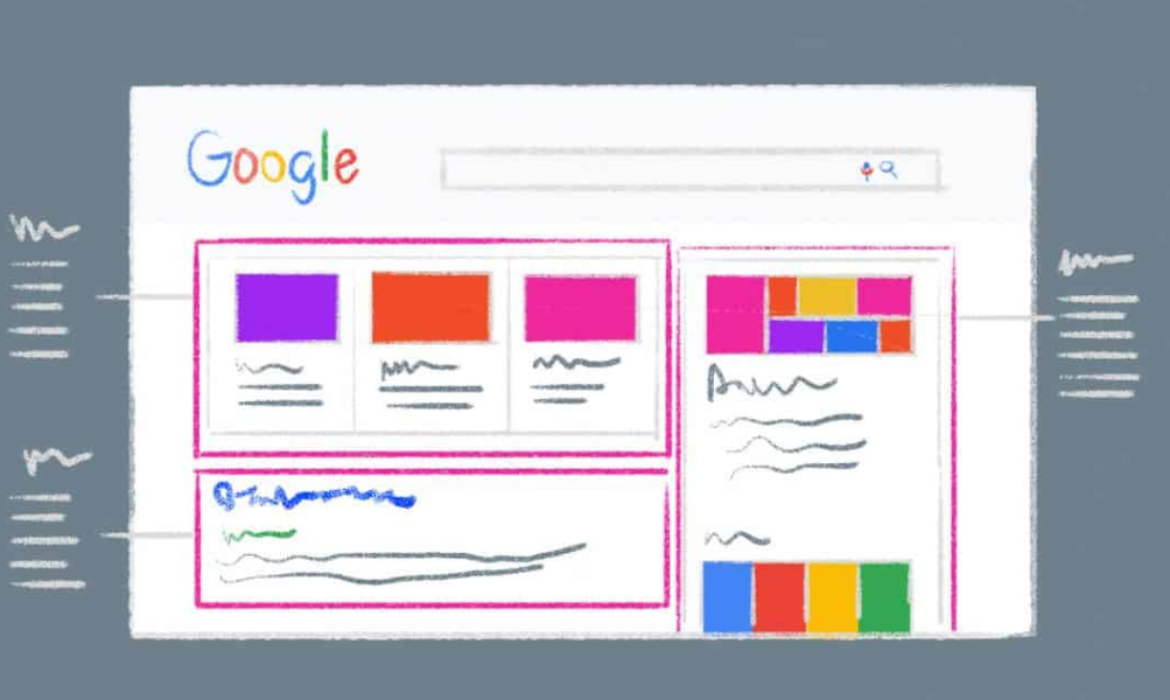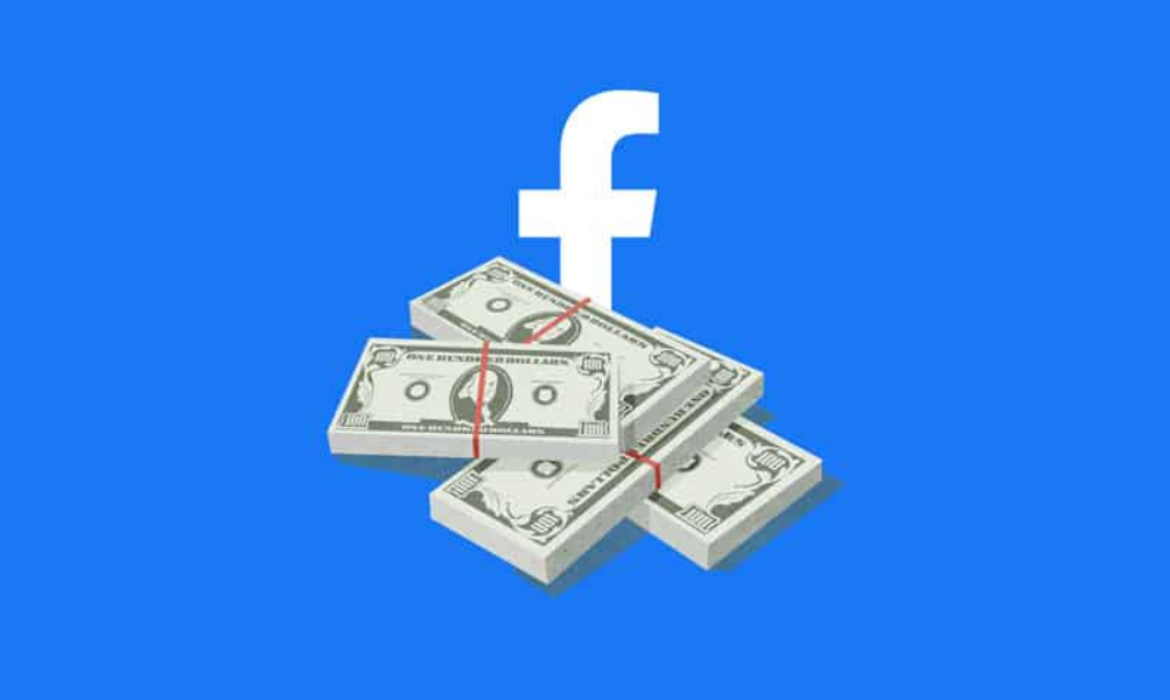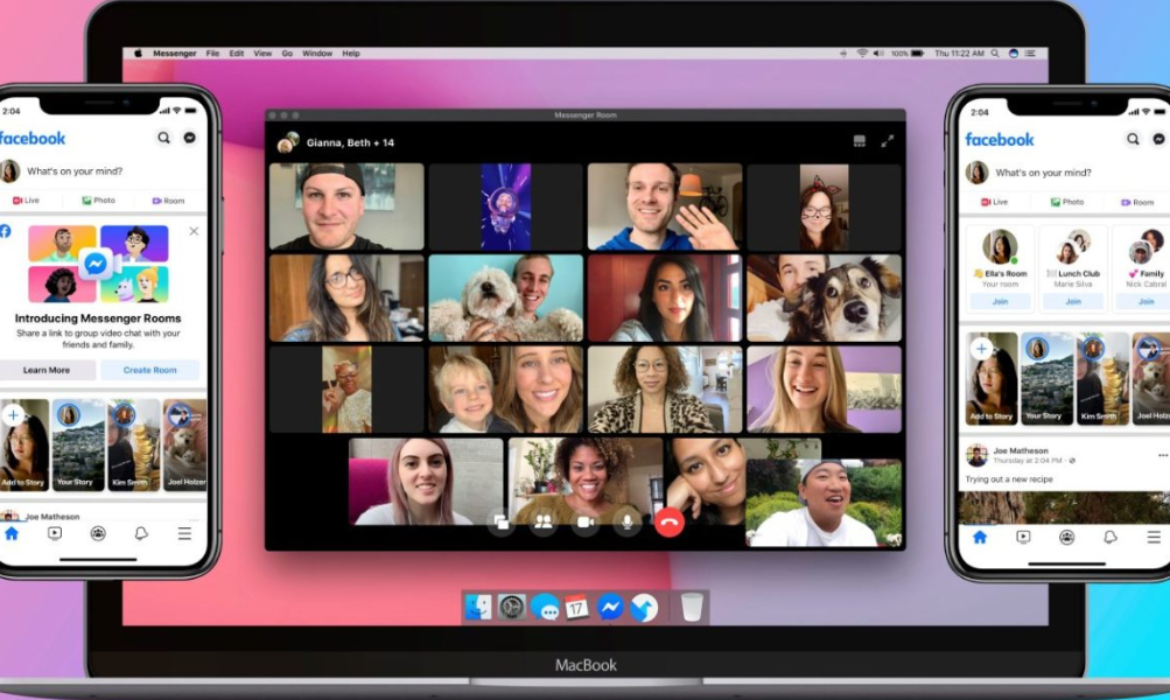Financial Report Card Of The Global Giants And Industries In COVID-19
Media companies are facing distress owing to the pandemic crisis, particularly those relying on advertising revenue. The current situation is precarious that compelled companies to roll out furloughs, pay cuts, or layoffs.
Even though publishers are recording high traffic, there is a mismatch in demand and supply in the ad market. Subscriptions are a silver lining for publishers but again sustainability is in question. Many businesses are impacted due to cancelled live events like sports that would bring a vast sum of revenue. Newsstands sales have also witnessed a fall.
Keeping the above factors in mind, below is the analysis of leading media companies’ financial and quarterly reports and their progress in this crisis.
CONGLOMERATES
Bertelsmann: Ad funded businesses were affected while music, services, and education business performed well.
The German media conglomerate Bertelsmann’s revenue declined by 2.7%. The advertising-funded business Q 1 was “highly affected” by the pandemic. Within the digital business RTL Group specifically, the revenue was down 3.4 % owing to the cancellation of ad bookings at the start of March or postponement of productions.
Music business BMG, its Arvato services business and its education business performed well. Subscription to the online streaming services was up 34% Y-o-Y.
Comcast/NBCUniversal: Broadband business upticks whereas rolling out Peacock streaming service.
Comcast is a large company with its broadband business marks an uptick with signups. and revenues up by8.8%. On the other hand, its theme park, TV and film production business is on hold.
NBCUniversal and newly acquired Sky TV cannot broadcast live sports. The company expects the advertising business to be down significantly in Q2
NBCUniversal Q1 revenue was down 7% and it rolled out ad-supported Peacock streaming service to Comcast customers in April.
Disney: Theme Parks and Sports Broadcast Shut, Disney+ subscribers up.
The crisis led to shutting down of theme parks, and productions and theatre movie releases were put to hold. Ad revenue at its TV business was affected as ESPN couldn’t air any live sports.
However, it stepped up the launch of ad-free streaming service in European countries. Disney+ had 33.5 million subscribers by the end of Q1 and an average of $5.63 in monthly revenue per paid user. Disneyland Shanghai did reopen, at 30% capacity on May 11.
WarnerMedia (owned by AT&T): Q1 Revenues severely hit.
Recently, folded its Xandr advanced advertising unit into a bigger WarnerMedia business.
Q1 revenues of WarnerMedia was down 12% on the year-ago quarter to $7.4 billion due to lower ad revenues in March on sports cancellations. Movie productions are also on hold.
PUBLISHERS
News Corp: Circulation and Subscription revenue grows, Ad revenue takes a hit.
Rupert Murdoch’s News Corp includes various leading and established brands like The Wall Street Journal, The Sun, and many more in U.S, U.K, and Australia.
Overall revenue declined 7.8% to $2.27 billion in Q1 due to weak ad business, low ad revenues, and negative currency movements. April ad revenue for Dow Jones declined 20% from the prior year whereas for News Corp Australia and News UK fell by more than 45% which includes negative currency impact.
The Wall Street Journal reported circulation and subscription revenue growth by 1% reaching a record subscriber base of 3 million overall, of which 2.2 million are digital-only.
The New York Times: Focus on Subscription Revenue to thrive in the post coronavirus world.
The NYT is leading more emphasis on subscription revenues to reduce its dependency on ad revenue to be in a better position and thrive post coronavirus world.
NYT recorded the highest quarterly increase in new digital-only subscriptions-up 587,000 in Q1 -leading to a 5.4% increase in subscription revenue to $285.4 million. Ad revenue fell by 15% and likely to fall further in Q2 somewhere between 50% and 55%.
“Other revenues” segment is estimated to fall around 10% as licensing revenue from Facebook News is expected to be “more than offset”- by lower revenue from its live events and its TV series.
TV AND CABLE
Discovery: Their channels are new sports.
Discovery CEO David Zaslav on the Q1 earnings call said, “Our channels are the new sports — the numbers are huge” around its lifestyle channels like HGTV, Food Network, and DIY. The engagement with the characters and talent is enormous. Discovery is also saving money productions through the pandemic as the film shows from home.
Total revenue declined from 1£ in the first quarter to $2.68 billion and expects advertising revenue to fall significantly in 2020. Many sports events are postponed and 90% of the sports deals have force majeure provisions or provisions to not pay for the content that is not received.
Fox: Fox News gains the largest audience.
Revenue for the three months to March 31 rose 25% supported by the forecast of Super Bowl in February, an increase in political advertising, and growth in affiliate revenue. But in March entered coronavirus crisis leading to the postponement of sports events and suspensions of entertainment shows.
80% who signed up for Fox Nation streaming service from Fox news continued to become paying subscribers and advertisers from sectors like technology and communications looked for the transition from sports buy to news buy. Ad revenue within local TV stations to be down 50% from last year.
ViacomCBS: Streaming revenue continues to grow and more on its way441.2 b
Revenue for Q1 fell 6% to $6.67 billion of which advertising revenue marked a 19% drop though a comparison to last year would be unfair when it aired Super bowl and basketball tournament.
Streaming continues to grow- domestic and digital revenue up by 51% to $471 million and had 13.5 million streaming subscribers. It intends to build “a broad pay streaming product in multiple markets” over the next 12 months. It announced a distribution deal with YouTube TV, which will carry 14 ViacomCBS channels
DIGITAL GIANTS
Alphabet or Google: Faring well in this crisis and a better situation.
Q1 revenue stood at $41.2 billion, up 13% Y-o-Y basis(including Google cloud revenue and the ‘other bets’ segment).
According to CFO Ruth Porat, Youtube’s March revenue “decelerated to a year-on-year growth rate in the high single digits” and Google Network March revenue declined “in the low double digits.”
Google Cuts Marketing Budgets by 50%, Freezes Hiring, and launched a “Journalism Emergency Relief Fund”.
Baidu: A closer watch on the signs of recovery in the upcoming result.
Chinese advertising giant Baidu was the first to report the coronavirus crisis set to affect media companies and expect a revenue drop of between 5% and 13% due to advertiser pullback.
In April, it suspended updating content on certain newsfeed channels within its app due to government directives which may impact its marketing services revenue. On May 18, Baidu will give the next quarterly update, and would be worth watching whether there is any recovery in the ad business.
Amazon: The advertising business grew as directly related to eCommerce sales
Amazon’s Q1 revenue soared as consumers quickly shifted to shopping online amidst the coronavirus crisis. Conversely, revenue rose 26%, and profit dropped 29% compared to last year’s quarter. The cost grew to finish the surge in orders
In the financial statement, the ‘other’ category is advertising business- revenue grew by 40% to $3.9 billion in Q1. The growth is consistent with a little downward pressure in March but no major impact as its directly related to eCommerce sales. ‘
Facebook: Post Strong Earnings, Exceeds Projections
Facebook ad revenue grew by 17% Y-o-Y to $17.4 billion despite the instability in the digital ad market due to COVID-19.
Facebook saw strength in the advertiser’s vertical- gaming, technology, and e-commerce whereas travel and automotive were the weakest verticals in the first three weeks of March.
Facebook had Pledged $2M Grant Funding To Support Publishers Financially.
Snapchat: Users and Revenue Increases, ad spend declines
Snapchat reported in its Q1 2020 earnings – strong gains in both users and revenues but a dip in advertiser spend despite the growing concerns about the coronavirus pandemic. the company reported a 44 percent (Y-o-Y) increase in its first-quarter revenue to $462 million. Snap benefited as people used animated lenses to keep in touch with loved ones in this lockdown. Snapchat’s daily active user (DAV) base reached 229 million.
Direct-response advertising accounts for more than half of the company’s revenue and clients in sectors like gaming, e-commerce, and consumer packaged goods continue to spend even during the crisis.
Twitter: Work in progress over AdTech concerns
Twitter’s user growth jumped in March as people rushed to check the latest news updates related to the coronavirus. Despite a 9% growth in daily users, revenue was up only 2.6% to $807.6 million and reported a loss of 8.4 million in Q1 results.
In comparison to its competitors, Twitter doesn’t have a direct-response advertising business. Therefore, the company is improving its mobile application promotion products and rebuilding its ad server which is expected to be up and running by Q2.
Publishers Withdraw Ad Inventory From The Market To Protect Ad Prices
Generally, conventional wisdom says a publisher would sell more ad units at a lower price in a weak market. However, publishers are doing the opposite and pulling their inventory to take a short-term revenue hit and protect their inventory price from falling further. This will help their business in the long run by not falling into the trap of price cuts which would be difficult to win back.
Programmatic advertising market operates under an auction system, lower advertiser demand, and higher web traffic to publishers site has pushed programmatic ad CPM’s down by 10%-20%. Since buyers are now more loyal to price than brands, publishers are preventing prices to tank further to a point of devaluing their inventory over the long term. While some publishers are reducing their inventory in the open market to keep the prices from falling further, others are using ad slots to push internal subscriptions or eliminating ad slots from the pages. For instance, Buzzfeed is getting rid of display ads that receive lower viewability scores.
Unfortunately, the publishers are acting independently and not considering the impact on the broader market. They aim to protect their own inventory prices from falling low as they fear it will take a longer time to return to the previous levels especially if advertisers are buying at a bargain now and unwilling to pay more later when things are back to normal.
As quoted by Digiday, Andy Ellenthal, CEO of the ad sales reporting platform STAQ shares a similar opinion and said, When advertisers return to their normal spending amounts, “they’re going to absolutely remember that a publisher was 25 cents in April of 2020.”

Image Credit: Digi Day
As per the above STAQ graph, the average U.S. display ad CPM in the open auction has fallen from a high of $1.34 on March 1 to $0.91 on May 3.
Even though average CPM has bottomed out on April 8 at $0.83, Andy Ellenthal believes CPM’s will not experience a U-shaped recovery but more of an L-shaped recovery, a slow and steady upward trend. This means publishers whose CPM has fallen least will have to cover the shorter route to return to previous prices.
DigiDay interviewed a few publishing executives and one publishing executive said,
“I’ve got to manage my supply to keep it in balance with demand, and demand has fallen so fast that now we’re trying to get ahead of the game. How much supply can we take off the table to control the CPM without actually truly hurting our business more than it’s hurt now?”
A second publisher executive said that the removal of one ad unit across their sites is equivalent to more than 1 billion monthly impressions. It is a generous number but not significant enough to move the market. Media Math’s DSP sees more than 180 billion impressions each day.
On this Ethenall said,
“These publishers always have to strike a balance between fill and yield. Chances are they are not going to fill 100% of their ad slots right now. If you have a billion impressions that go unsold anyway, what’s the value of them if they’re only pulling down pricing for your better impressions?”
Many publishers have adjusted their floor price to a minimum level at which the inventory can be sold. However, the lower ad demand has made the publishers pull inventory and protect prices as inside programmatic advertising, everything revolves around “Price.”
One of the publishers used to increase floor price by 15% every two weeks since the beginning of Q1. However, in the second half of March, a significant number of impressions went unsold. The publisher could have reduced the price to sell his inventory but he didn’t and said, “in no way do I want to drop my floors to 25 cents because I don’t want crappy ads coming in.”
Lower the ad prices, the higher the chances of giving in to undesirable advertisers who can jeopardize the ability to attract genuine advertisers. Publishers use this opportunity of lower demand to seek out prospective advertisers, but they are wary that lower CPM can alleviate advertiser’s interest in doing programmatic direct or private marketplace deals.
Publishers are also looking at this opportunity to experiment repurposing of impressions that can boost their other businesses and become less reliant on advertisers. For instance, if a publisher can see that house ad proclaiming its subscription product can attract more subscribers and yield than those impressions to advertisers, they would monetize on house campaigns and not take revenue from programmatic advertising.
Shopify Revenue Surges As Pandemic Brings More Business Online
E-commerce platform and payment provider Shopify reported its first-quarter revenue that surpassed analysts’ estimates as more businesses moved online to survive coronavirus pandemic.
The Ottawa-based company Shopify said in a statement that sales grew by 47% to $470 million from the same quarter a year ago. However, analysts expected revenues to come to around $443 million
The key metric of gross merchandise volume which represents all goods sold on the platform 46% to 17.42 billion compared to the previous year. Again, beating analysts expected volume to $16.68 billion.
While sales were booming, the company still posted a net loss of $31.4 million or 27 cents a share. However, on an adjusted basis, the company posted a profit of $22.3 million or 19 cents per share for the first quarter of 2020 compared with an adjusted profit of $7.1 million or six cents per share for the same period last year.
CEO Tobi Lutke said in the quarterly release,
We are working as fast as we can to support our merchants by re-tooling our products to help them adapt to this new reality. Our goal is that, because Shopify exists, more entrepreneurs and small businesses will get through this.
Moving Online
Shopify reported a fall of 71% in gross merchandise volume through its store point-of-sale as stores shut down due to pandemic between March 31 and April 24. Companies also downgraded from Shopify Plus to lower-priced plans.
Also, it throws light on the drop in point-of-sale purchases from the brick and mortar stores questions the sustainability of online switch. It provides store based point-of-sale systems to merchants to operate from a single platform in order to maintain online store and sales.
It is closely observing consumer spending habits online and the ability of brick-and-mortar retail merchants to shift sales online. According to the company statement, Shopify retailers managed to replace 94% of their store volume with online sales.
Retail merchants are adapting quickly to social-distance selling, as 26% of our brick-and-mortar merchants in our English-speaking geographies are now using some form of local in-store/curbside pickup and delivery solution, compared to 2% at the end of February.
Chief technology officer Jean-Michel Lemieux noted the surging demand and had U.S. Black Friday-type of traffic as businesses have used Shopify to stay afloat as nationwide lockdown forces retail store closure across the world.
Impact of COVID-19
This pandemic has strained small and medium-sized businesses and accelerated the shift of buying habits to eCommerce. Shopify introduced many initiatives to support merchants and help entrepreneurs start a business online during the ongoing COVID-19 pandemic, including, offering tools to businesses to open their own digital store online across channels including social media.
An extended 90 day free trial for new sign-ups, gift card capabilities to merchants, and introduction to in-store or curbside pickup and delivery options for greater flexibility in the movement of inventory between different locations.
The company stated that the new stores created on the platform grew 62% between March 13 and April 24 versus the prior six weeks, driven by both first times and established sellers. But is also added,
It is unclear how many in this cohort will sustainably generate sales, which is the primary determinant of merchant longevity on our platform.
What analysts have to say
Few analysts still don’t see Shopify profitable enough in the future to justify the current stock price. They believe the rally is overdone.
Barry Schwartz, chief investment officer at Baskin Wealth in Toronto notes that as they grow, the company will face fierce competition from rival Amazon. He added,
They’re up against some very heavy hitters and I don’t think those guys are going to let Shopify win everything.
Buying it here at that valuation, you’re essentially saying, ‘I don’t care.’
Canaccord Genuity downgraded the stock, with a warning “we’re not entirely convinced” that gross merchandise volume “is as bulletproof as perceived.”
Every 2020 Google SERP Feature Explained: A Visual Guide
How many searches would happen to Google every minute, month, or year? Have you wondered? Finally, the company has released updated data.
Every second, Google processes 63,000 search queries.
Every year, Google has 2 trillion searches.
A caveat, Keep ‘at least’ in mind while reading the figures.
This shows we are so obligated to the power of Google search behemoth and its mystical computing. Google holds nearly 72% market share of search engines.
Why it matters
Companies spend time and effort to develop fantastic content, great titles, meta descriptions, and permalink to rank high on the search and drive conversions. However, a key strategy is often missed- to capitalize and enhance their entry on Google SERP (Search Engine Result Page).
Incorporate the rich snippets into your online stores, websites, blogs, and more
SERP is the way
Google Search engine pages are now accurate, personalized, relevant, dynamic, and helpful. Using structured data, there are many visual enhancements made to the search engine result page which helps you to find the required information. It is essential to know the enhancements as indexability and site optimization has an impact on organic rankings.
Take a look at the enhancements and characteristics of each one:
- Direct Answer Box with short, rapid answers, lists, tables, or carousels may have an image to enhance it.
- Rich Snippet is the additional line of context below traditional SERP and is provided by the websites with price, ratings, etc to enhance the search engine result page.
- Rich Cards for mobile users.
- Knowledge Graphs shows up on the right of a SERP displaying curated images and information about the search.
- Knowledge Panels shows up to on the right of a SERP displaying curated images, information, directions specific to a brand or business.
- Local Pack is an integral part of the local search results with business information, reviews, and location and plays a key role in customer’s decision making.
- People also ask provides related questions and answers to the original query.
- Image Pack is a horizontal carousel of queries related to images or photos.
- Site Links is an expanded pack of links within popular sites. It may also include a site search field that is particular to the internal search mechanism.
- Twitter displays a carousel of tweets with clickable images and links.
- Newsbox: is a carousel of trending, top stories, or breaking news related to the query.
Why Use Rich snippets
By structuring the data and following Schema standards, you can utilize rich snippets and improve your overall visibility on the search engine as it educates the algorithms on the information within the page.
If your company or marketing team is not taking advantage of rich snippets then time to change strategy and develop a new solution. Rich snippets help you enhance your search, increase click-through rates, and engagement. If your company or marketing team is not taking advantage of rich snippets then time to change strategy and develop a new solution. Rich snippets help you enhance your search, increase click-through rates, and engagement.
The Big Picture
This infographic from Brafton, A Visual Guide to Every Google SERP Feature: Snippets, Panels, Paid Ads and More, provides insight on how rich snippets and structured data look like on a search engine results page and why it appears.

Publishers at risk by relying on transactional subscription technology
Transactional technology that enables transactional customer relationship is the base of the digital publishing ecosystem for the past two decades. This is how it works- attracting a reader, showing them a headline or a few words or an article, then coming up with a paywall to buy a short subscription package and moving on.
Every potential subscriber is treated as any other e-commerce customer with the same conversion funnel. We have built complex tech- stacks to support this approach and the ad-focused tools and subscription products remain unchanged and operational at certain levels in the digital customer journey. Till now, the flexibility in the customer experience was never a question. The journey was straight, simple, and direct with a single focus -deliver content, monetize on it, and maintain engagement. However, this transactional approach no longer caters to commercial or customer needs.
Lately, people are accustomed to making their own choices- which product is suitable for them, opt for premium or family packages depending on their needs and likes. The growing subscription economy has altered the way a customer perceives their product and services.
A successful recurring relationship is built on personalization when a customer can choose the product or package right for them and leave the rest. Jim Barksdale rightly said, “There are only two ways to make money in business. One is to bundle, the other is to unbundle.”
Businesses should be able to answer important questions like which one to pick, where, and how.
Presently, to answer the questions, publishers are enforced to hack the existing transactional tools and development teams are still investing their efforts on the complex system instead of building new products to grow revenue. Marketing teams want to explore with fine-tune new customers but are hindered by the same old inflexible technology.
Ultimately, publishers suffer badly due to lack of innovation, low ad -yields, complex technology, high costs, and no personalization for consumers. In simple words, the industry’s technology is unfit and outdated and it is worrisome considering the future is about dynamic products and personalization and automation. By relying on transactional technology with all limitations, publishers are at risk, and growth is restricted in this new economy.
Coronavirus led digital publishing growth
With COVID-19, the subscription economy has changed in six weeks which could have taken longer otherwise. The UK’s largest subscription site, iSubscribe witnessed its digital magazine subscription jump 400 % jump in volume. The traffic to the Financial Times website saw a jump of 250% Y-o-Y in the past month. There is an all-time high in the industry conversion rate.
But the question now is, will this continue post coronavirus crisis when the audiences find themselves with subscriptions that are not required?
So what next to sustain this?
Commercial teams need to set up a highly personalized customer journey without reaching to their technical team for help each time. They should independently learn, test, and change a range of products, packages, and revenue models.
This implies publishers should not rely on years of coding experience to handle but need integration of tools across the customer journey- offering personalized outcomes to every potential subscriber. Publishers need tools that don’t require coding to ensure that every client, prospect, and visitor is handled by the organization and the power to build change is in the hands of the specialists who know the market.
The world’s largest publications are using this platform to get ahead of the curve and be ready to steal the thunder once the markets settle -which might not take too long.
Omnicom Media Group MENA To Provide Complimentary Media Space To Charities
Omnicom Media Group MENA has decided to work together with regional media owners in the Middle East to provide complimentary media space to its long-standing partner charities. This initiative is a part of the company’s COVID-19 relief efforts. This noble act will help Dubai Cares, Gulf for Good, and Médecins Sans Frontières to reach out to a larger audience with their call to action. The COVID-19 campaigns are mainly aimed at education, health, and critical support for people especially children who are in need in the region and beyond.
The response from the media industry is astounding. The media partners currently include Backlite Media, Digital Tree, DMS, Elevision Screens, Eye Media, Future Tech, Group Plus, Maddict, MMP, Reach MENA, and Snap Inc. They have offered free media space to promote various charities and draw support for their causes. Omnicom Media Group MENA also provides creative support.
Omnicom Media Group MENA has shared a long-term relationship with these three non-profit organizations and supported their causes over the years. The latest initiative is a step to ensure to get the means for the mission of these charities towards the community continues when donations are down due to coronavirus crisis.
Mario Stephan, Executive Director MSF UAE said,
“This pandemic is like no other we’ve seen in modern times, impacting our patients, our staff, and our programs. Only together can we muster hope to get through it successfully.”
He further added,
“We’re very grateful for this initiative as it will help drum further support for our patients. It’s important we never lose sight of the less fortunate than ourselves, even now.”
Alanna Turpin, Sustainability Lead at Omnicom Media Group MENA added,
“Our industry has a very powerful talent that’s acutely needed right now. It’s the ability to raise awareness, rally and move people to achieve great things through collective action.”
In this crisis, it’s about saving people from illness and poverty. It’s urgent our charity partners get the resources they need to alleviate the suffering. Media owners with available advertising inventory they wish to commit to this effort can contact us at CSR-MENA@OmnicomMediaGroup.com”.
Verizon Media Expands DSP to Offer Premium Native Ad Inventory.
Verizon Media has announced the expansion of its demand-side platform bringing in premium, programmatic, and now its full native marketplace inventory, formats, targeting, and measurement into a single unit.
The DSP gives a unified solution to the advertisers to check on every aspect of their buys across all formats and inventory purchases- from planning, buying, and management to optimization.
Today, people are using more screens and devices than before. Therefore, it becomes challenging for advertisers to provide a personalized and unified experience across the media mix. This level of fragmentation eventually leads to using different tools for different formats and then measuring the success of each of them would be laborious. But now advertisers can have access to omnichannel inventories including mobile, digital out-of-home, CTV, video, and audio along with native advertising from a single dashboard.
According to Iván Markman, the chief business officer at Verizon Media,
The Verizon Media native experience was separate from the programmatic capabilities in our DSP…Now both are one, and this includes a lot more consistency planning and measurement and attribution. Over the last few quarters, we’ve looked at bringing more transparency and insights to our DSP.
The expansion of DSP’s functionality provides exclusive access to native ad inventory from Verizon’s owned and operated properties like Tech Crunch, Yahoo, and Huffington Post. The robust native marketplace format and premium inventory along with the programmatic offering, supported by 1st party data will help advertisers navigate a cookie-less environment.
In an era when media agencies are on hiring freeze if not headcount cutbacks, it was essential for the company to improve the efficiency of the tools. Markman stated, “You can now do more with less.“He further added,
Sometimes you’d have seven different platforms for things like digital out of home and native then display. Many of our clients have unfortunately had to furlough some team members or lay off their workforces. This helps with performance.
Tik Tok Tests ‘Shop Now’ Button For Influencer Videos
TikTok, mostly considered as an entertainment platform is improving its advertising offerings and nascent Creator Marketplace that matches advertisers with vetted publishers and influencers. DigiDay reported that TikTok is testing a new ad format namely the ‘Shop Now’ button. This would link brands to the leading influencers allowing the creators to display the Call-To-Action button in their videos. The ad revenue will be divided between TikTok and influencers.
The revenue split ratio is not decided yet but DigiDay reported that the company is discussing 20/80 splits in Tik Tok’s favor. This model allows TikTok to tap into revenue that was previously shared between advertisers and influencers.
Can you shop on TikTok?
The Shop Now option influences the user to shop the product right away is one way of having both – performance and direct response ad products. The creator CTA feature is still in the early testing stage and is available to only select advertisers and agencies.
As quoted by DigiDay, a TikTok spokeswoman,
“We are constantly experimenting with ideas and features to improve the app experience for our users. TikTok is a platform for creative expression and a big part of that is showing and sharing the things you love with others. We’re in the early stages of testing a way users can add links to products to their videos and will share more updates when we have them.”
Earlier this month we witnessed Levi’s was among the first brands to partner with Tik Tok’s influencers and trial the Shop Now’ program. It partnered with the influencers to promote its “Future Finish” customizable denim technology on the platform.
Levi’s reported the product views doubled on the ‘Future Finish’ page that featured in the campaign. All advertisers can access to ‘Shop Now’ button to help drive traffic to their websites but is different from the CTA Beta test said TikTok spokesperson to DigiDay.
Is TikTok following the YouTube way?
TikTok has increased its focus on Creators and for this, it had launched Creators Marketplace late last year. The Creators marketplace helps advertisers to filter out the platform’s top creators.
It appears that TikTok is moving towards YouTube Creator shared revenue model than the Instagram model. Amy Luca, chief executive at influencer marketing company TheAmplify said,
One of the things that Instagram struggles with is retrofitting some of their programs to pull out money from the gray market ecosystem that is being earned by influencers and paid by brands on their platform.”
Growing users of the social video app
TikTok has been growing rapidly over the past year and has been on a tear since the lockdown. Data company Apptopia estimates TikTok was the second top free app on iOs and Google Play stores in the U.S. on April 28. It is also estimated to have 328 monthly active users and was downloaded 100 million times worldwide between Mar 20 through April 28.
Jude Rajanathan, a global director at media agency Zenith stated that TikTok will work on improving its CTA buttons to push for more performances and direct-response ads.
Facebook Post Strong Earnings in Q1’20, Exceeds Analysts Projections
Its earnings season and Facebook has some relatively good news on that for the investors. It has impressively beaten Wall Street expectations on revenue and earning per share (EPS). Facebook ad revenue grew by 17% Y-o-Y despite the instability in the digital ad market due to COVID-19.

Image Credit: Facebook
Why does it matter?
Interestingly, Facebook was able to beat top and bottom-line revenue expectations amid the coronavirus crisis showing how its business is strong and growing. However, the company didn’t provide specific revenue guidance for Q2 due to the ongoing uncertainty but offered a snapshot on the revenues of upcoming quarters.
- Meanwhile, Facebook said that the current rise in engagement will continue but the usage will come down once the stay-at-home orders are lifted.
- The digital advertising industry has taken a hard hit due to shelter-at-home orders globally. Facebook said in a statement, “We experienced a significant reduction in the demand for advertising, as well as a related decline in the pricing of our ads, over the last three weeks of the first quarter of 2020.”
Let’s talk numbers
- Earning per share (EPS): $1.71 vs. $1.75 per share forecast by Refinitiv
- Revenue: $17.74 billion vs. $17.41 billion forecast by Refinitiv
- Daily active users (DAUs): 1.73 billion

Image Credit: Facebook
- Monthly active users (MAUs): 2.6 billion
- Family Monthly Active people (MAP): 2.99 billion monthly users across its family of apps. This metric helps to measure Facebook’s total user base across its main app, Instagram, Messenger, and WhatsApp.
- The average revenue per user (ARPU): $6.95
- Other revenue: $297 million which is driven by sales of VR headset ‘Oculus.’
- Cash and cash equivalents: $60.29 billion
What lies ahead?
- Facebook is the third internet company that posted strong Q1 results after Snapchat and Google despite the hindrances in the digital ad market. This shows big internet companies will keep dominating the advertising ecosystem due to the pandemic.
- CCS Insight chief operating officer Martin Garner believes the impact of the virus will lead companies to use digital services from advertising to collaboration.
“………..Although Google and Facebook will take a hit from Covid-19, we expect them to be leading indicators of recovery, as digital advertising and other services show early growth in economies getting back to normal.”
Facebook Rolls Out Video Chat Messenger Rooms To Beat Zoom And The Likes
- Facebook announced 50-person video chat rooms called Messenger rooms.
- Regardless of whether participants have a Facebook account, they can participate in the calls.
- Messenger Rooms are an answer to Zoom and Houseparty for Pandemic.
- Messenger Rooms will roll out this week in a few countries and the rest of the world next week including the U.S.
Video calling services have seen a sharp rise during the coronavirus crisis and the use of video calling on Facebook Messenger has doubled in the coronavirus affected areas. On Friday, Facebook CEO Mark Zuckerberg delivered a live stream to announce the company’s retooled video products for users to connect while at home under quarantine. The video update perfectly fits Facebook advertising plans that focus on e-commerce.
As many countries issued stay-at-home orders, rival apps Zoom witnessed a drastic growth in the active users to 300 million in April, and Houseparty, owned by Fortnite-maker Epic Games, was downloaded more than 2 million times in the start of March. Facebook has seen the success of Zoom, the video conferencing sites popular among the companies that have sent employees to work-from-home. The biggest product launch ‘Rooms’ will be created via Facebook Messenger which allows 50 people to hang out at a time. The company plans to add the feature to Instagram, Whatsapp and it’s portal-video calling devices soon.
Key features of Messenger Rooms:
- People will be able to keep their room private, block unwanted participants, and invite people who are not on Facebook.
- Participants can use AR filters and change the background real-time
- Discoverable rooms will be listed at the top of the feed.

Image Credit: BBC
However, messenger rooms are not end-to-end encrypted like Group Facetime or WhatsApp call. Stan Chudnovsky, VP of Messenger said on the blog,
Room calls are not end-to-end encrypted, but Facebook says it does not view or listen to calls. The creator of a room can remove participants at any time, and rooms where illicit behavior is taking place can be reported to Facebook. (WhatsApp video calls are end-to-end encrypted, offering an extra layer of protection to users.)
Summary of Other Updates from Facebook
- WhatsApp will accommodate from four to eight participants in the video group calls making it a suitable competitor to Zoom.
- Facebook Live and IGTV: Facebook is creating advertising that fits in this environment especially in the areas that are popular among consumers like home cooking, fitness, and others. It will be open for business and more e-commerce activities will take place. 800 million people watch live streaming on Facebook and Instagram.
- Donate Button on Live videos: This helps musicians, artists, people, and activists can raise funds for causes during the coronavirus outbreak.
- Live via Audio only: with more musicians doing live concerts on Facebook Live, you can listen in case you cannot watch it or want to save on data.
- Instagram Live On Web: You can watch live videos related to any activity or product from the desktop.
- Portal Live: One of Facebook’s hardware projects that have seen a slow adoption but with the COVID-19 crisis the sales increased tenfold. You can go to Live to the pages and Groups devices from Portal devices and can also create interactive content for customers and communities.
- Facebook Dating Video Chat: It is in the nascent dating service. Facebook dating is a virtual meet up and does a video chat with matches on Facebook first.
Facebook is going to report quarterly earnings next week and it has already said that the revenue has been negatively affected due to the coronavirus crisis as advertisers have pulled back on spending and online ad auction prices have been reduced. According to eMarketer Facebook ads and the amount it earns from each unit sold has decreased by nearly 50% in some categories.
Debra Aho Williamson, principal analyst at eMarketer, in her note said,
“Those losses will be made up for by gains in categories that increased their use of Facebook advertising at the end of March, either to market products or services aimed at people staying at home, or to take advantage of drastically lower ad costs.”











